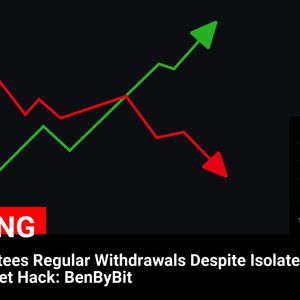Cryptocurrency traders, keep your eyes on the traditional markets! As Bitcoin and digital assets navigate their volatile paths, the movements of the US Dollar can offer significant insights into broader market sentiment and potential risk-on or risk-off shifts. This week, the US Dollar finds itself at a critical juncture, with geopolitical headwinds and key Fed speeches on the horizon. Will its support hold firm, or are we looking at a potential shake-up? Let’s dive into what’s shaping the Dollar’s direction and what it means for the crypto sphere. US Dollar Braces for Geopolitical Storms: Will Support Levels Hold? The US Dollar (USD) started the week on a muted note, hovering around the mid-106 range in the US Dollar Index (DXY). This calmness, however, is likely the eye of the storm. Traders are on high alert as a week packed with geopolitical developments unfolds, primarily centered around discussions concerning Ukraine and meetings in Riyadh, Saudi Arabia. The market is keenly awaiting any headlines that could trigger volatility and provide direction for the USD. Here’s a snapshot of the current situation: DXY Stuck in a Range: The US Dollar Index is trading flat at approximately 106.80, indicating indecision in the market. Geopolitical Focus: Ukraine and Saudi Arabia are key areas to watch, with potential for market-moving news. US Economic Slowdown: Recent data, including weak January Retail Sales, suggests the US economy is no longer outperforming peers, adding pressure on the Dollar. All Eyes on Riyadh: Geopolitical Events Take Center Stage This week’s main event is undoubtedly the meetings in Riyadh, Saudi Arabia. US and Russian officials are scheduled to convene, potentially paving the way for a high-stakes meeting between US President Donald Trump and Russian President Vladimir Putin to discuss Ukraine. The outcome of these discussions could have profound implications for global stability and, consequently, currency markets. Any perceived progress or setbacks in these talks could trigger sharp reactions in the US Dollar and across various asset classes. Key Geopolitical Factors to Monitor: US-Russia Talks: Focus on any announcements or leaks regarding the Ukraine situation. Saudi Arabia’s Role: The Kingdom’s position and influence in these discussions will be crucial. Market Sentiment: Risk-on or risk-off shifts based on geopolitical news will directly impact the USD. Economic Outlook Takes a Backseat (For Now): Focus Shifts to Fed Speakers While the economic calendar is relatively light this week, with the US bond market closed for President’s Day, the Federal Reserve (Fed) is keeping its presence felt through a series of speeches by key policymakers. Traders will be dissecting every word for clues about the future path of interest rates and the Fed’s assessment of the economic outlook . Fed Speakers on Monday: 14:30 GMT: Philadelphia Fed President Patrick Harker speaks on the economic outlook. 15:20 GMT: Fed Governor Michelle W. Bowman discusses the economy and bank regulation. 23:00 GMT: Fed Governor Christopher J. Waller provides his economic outlook. These speeches gain even more importance given the recent mixed economic data and the market’s ongoing debate about the timing and extent of potential rate cuts. Pay close attention to any hawkish or dovish signals emanating from these Fed addresses. Technical Analysis: Is US Dollar Support Really Holding? From a technical standpoint, the US Dollar Index appears to be at a crucial juncture. With US markets closed for President’s Day, significant price movement is unlikely on Monday. However, the technical chart provides key levels to watch as the week progresses. Key Technical Levels for DXY: Level Significance Resistance 1 107.35 (Previous support turned resistance) Resistance 2 107.91 (55-day SMA) Support 1 106.52 (April 16, 2024, high) Support 2 106.40 (100-day SMA) Support 3 105.89 (June 2024 resistance) Possible Downside Target 104.93 (200-day SMA) The Relative Strength Index (RSI) suggests there might be room for further downside. Keep an eye on these levels, as breaks below support could signal a deeper correction, while overcoming resistance could pave the way for renewed Dollar strength. Decoding Employment Data: How it Affects Currencies While not the immediate focus this week, understanding how employment data influences currency valuation is crucial for long-term market analysis. Employment levels are a vital indicator of an economy’s health. Strong employment figures typically boost a currency’s value due to the positive implications for consumer spending and economic growth. Key Employment Data Impacts: Positive Correlation: High employment or low unemployment generally strengthens the local currency. Consumer Spending: Robust employment drives consumer spending, fueling economic growth. Inflationary Pressures: Tight labor markets can lead to wage growth, potentially contributing to inflation and influencing central bank policy. Wage Growth: A Critical Inflationary Indicator Wage growth is another key metric that central banks closely monitor. Rapid wage growth can lead to increased household spending, which in turn can push up prices for goods and services. Unlike volatile inflation sources like energy prices, wage growth is considered a more persistent form of inflation, making it a significant factor in monetary policy decisions. Wage Growth Significance: Inflationary Driver: High wage growth can lead to demand-pull inflation. Policy Focus: Central banks use wage growth data to gauge underlying inflationary pressures. Persistent Inflation: Wage-driven inflation is often harder to control than other types. Central Banks’ Employment Focus: A Dual Mandate? The importance central banks place on employment data varies. Some, like the US Federal Reserve, have a dual mandate: to maintain price stability and maximize employment. Others, such as the European Central Bank (ECB), primarily focus on controlling inflation. Regardless of their mandates, labor market conditions are a critical factor for all central banks as they reflect the overall health of the economy and have a direct link to inflation. Central Bank Mandates and Employment: Fed’s Dual Mandate: Explicitly considers both employment and inflation. ECB’s Primary Focus: Inflation control, but employment is still a key economic indicator. Global Significance: Labor market health is universally recognized as crucial for economic stability and currency valuation. In conclusion, this week promises to be pivotal for the US Dollar. Geopolitical developments and Fed speeches will likely dictate its direction. Keep a close watch on the Riyadh meetings and Fed commentary, and monitor the technical support levels for potential trading opportunities. For crypto traders, understanding these traditional market dynamics can provide valuable context and insights for navigating the digital asset space. To learn more about the latest Forex market trends, explore our article on key developments shaping US Dollar liquidity.



















